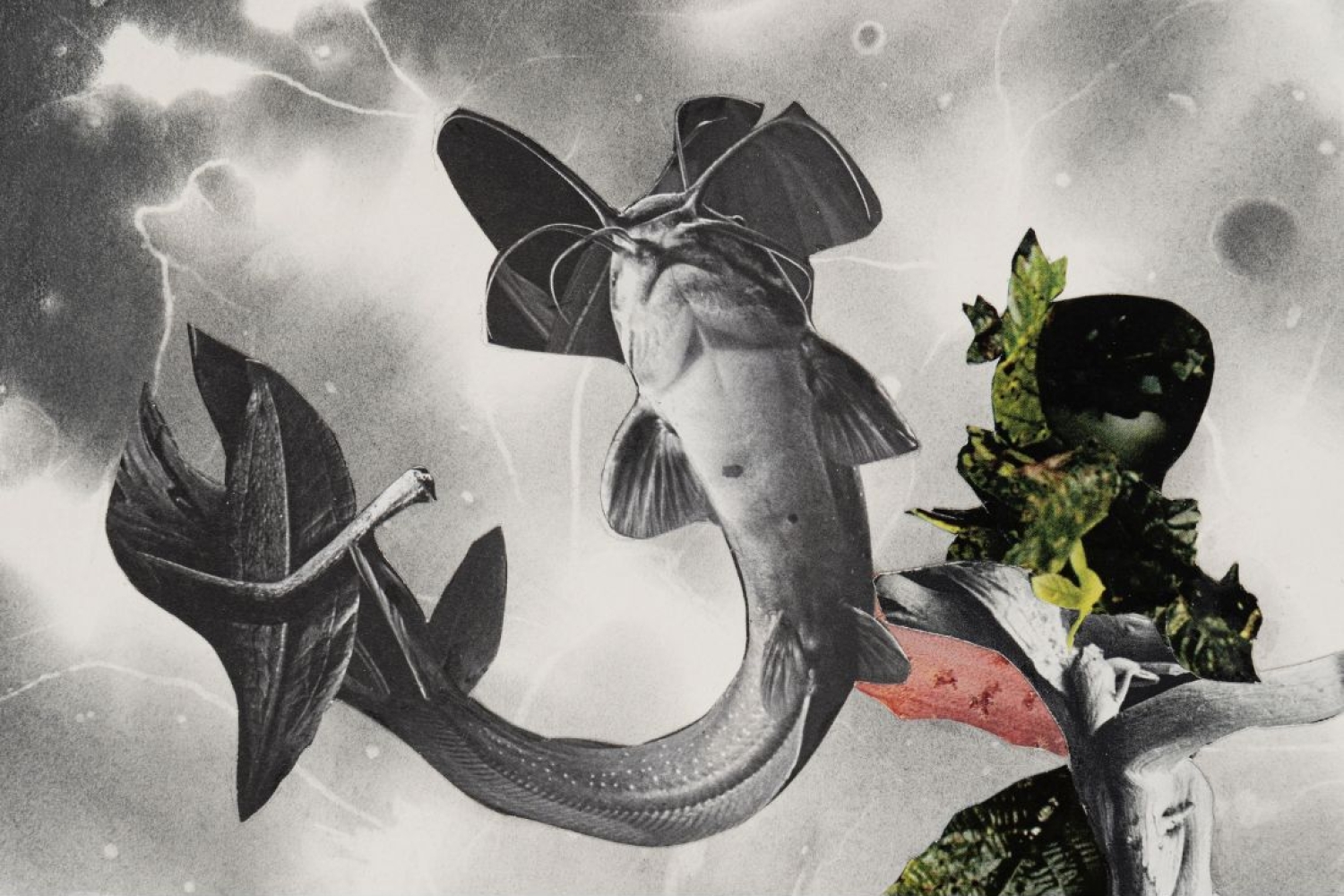
PARALLAX series: PORTAL, 2024 (Detail) Graphite and collage on Stonehenge paper 22 x 30 inches

PARALLAX series: PORTAL, 2024 (Detail) Graphite and collage on Stonehenge paper 22 x 30 inches
In Modern Romance and Other Deaths, Apnavi Makanji presents an evocative exploration of queer ecology, inviting viewers into a contemplative space where nature, the human body, and politics intersect. Through two distinct series—Appropriation, Disinformation - Nature and the Body Politic and Parallax—they challenges the colonial histories embedded in maps, questioning how these cartographies of conquest have shaped our relationship with the environment. Makanji’s absence of the human figure speaks volumes, subtly emphasizing the omnipresent violence we inflict on the earth. A deep love for nature underpins their work, yet it's a love tainted by grief, an acknowledgment of the rampant extraction and disregard for the world around us. The exhibition invites reflection on the grief of loss, the weight of human impact, and the hope for a more mindful, interconnected future.
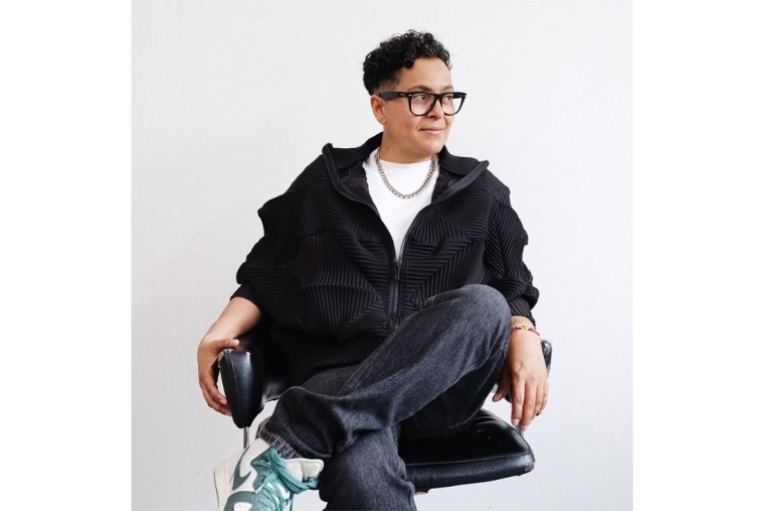
Apnavi Makanji, Image Credit: Diego Sanchez
How would you define 'queer ecology,' and how do you think it plays a role in the way we understand the relationship between nature and politics?
Queer ecology by definition is a more inclusive way of reflecting on our environment. I feel that it's a more radical manner of thinking than the current discourse that revolves around sustainability, which still implies feeding the ever greedy Capitalist economies from big tech to agriculture and the consumption of fossil fuels. Queer ecology in its simplest form is treating all living species whether botanical or animal with respect and empathy, and recognizing that they are crucial to the fragile equilibrium of the planet. This discourse requires breaking down the patriarchal and heteronormative hegemonies which hold so much power over how we interact with each other and nature. I believe that the current patriarchal hegemony can be broken down by a queer ecological approach - by collective acts of kindness towards the earth and every single other species. And in ways that have a wider impact, such as re-imagining and working our way towards a much less extractive future.
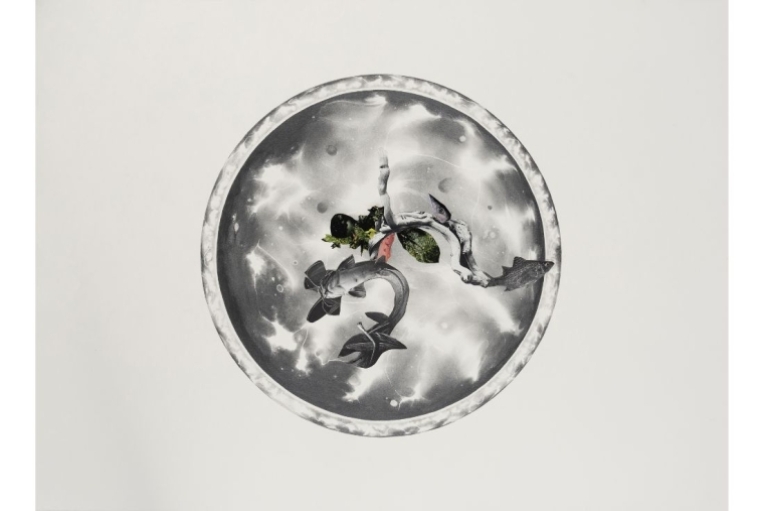
PARALLAX series: PORTAL, 2024 Graphite and collage on Stonehenge paper, 22 x 30 inches
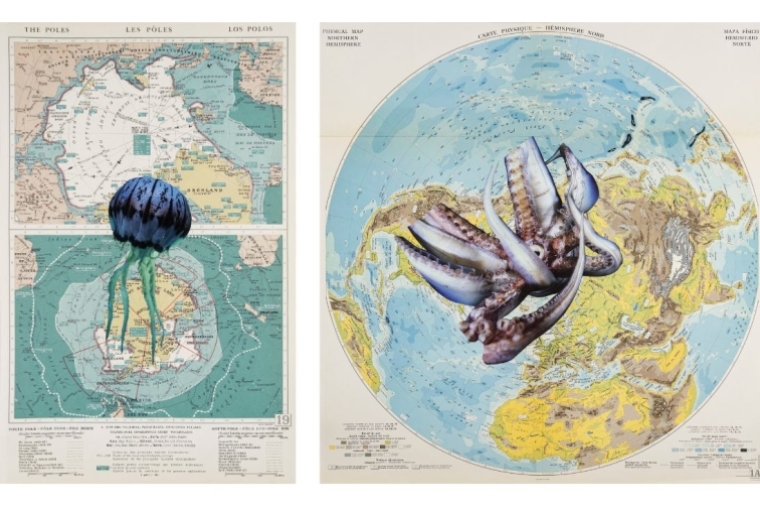
APPROPRIATION DISINFORMATION – NATURE AND THE BODY, POLITIC - Series: POLAR JELLIFICATION, 2024 (left) | Series: HUMBOLDT, 2024 (right)
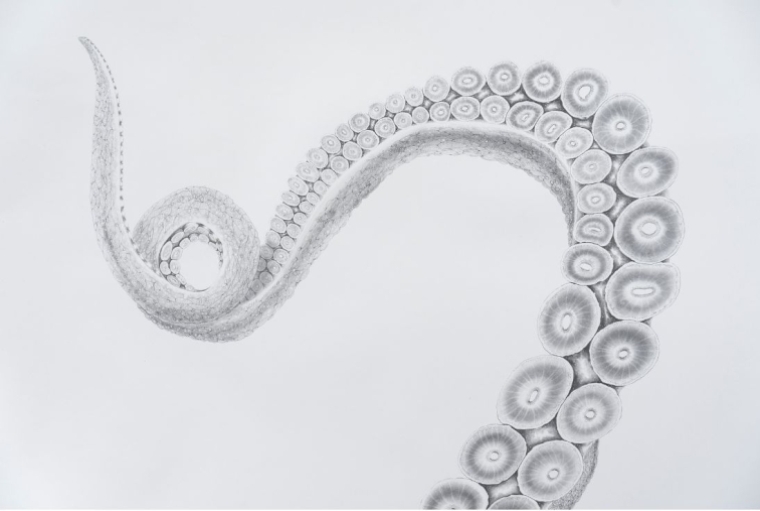
PARALLAX series: UMBILICUS , 2024 (Detail) Graphite on Stonehenge paper 118 x 50.5 inches
This is your fourth solo exhibition with Tarq, how do you think you have evolved as an artist?
This is indeed my fourth solo with Tarq and I also feel like this is my best work yet. The gallery has always given me complete artistic freedom and been supportive of my creative choices. On another note, there’s nothing like radical change or loss, in one’s personal life to really challenge the mind and although I started drawing in 2011, I never really knew how to draw realistic images. This is something that I have taught myself over the last couple of years. And after this show, I feel that my work is slowly finding an anchor in the practice of drawing and realism, and I’m very excited about the possibilities that this offers.
How has your personal experience living in Geneva and your interactions with the Rhône River informed your artistic practice and conceptual framework? What does water mean to you?
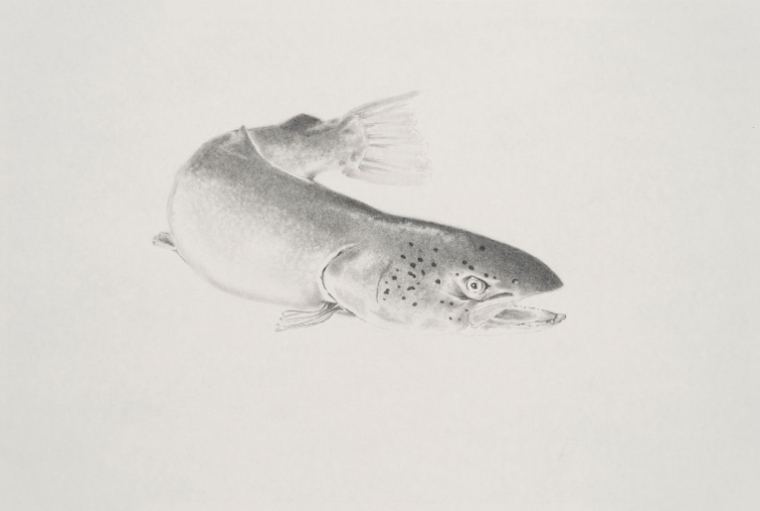
LEMAN FISH series: BROWN TROUT, 2023 Graphite on Hahnemühle paper, 8.3 x 11.7 inches
Words Paridhi Badgotri
Date 28.11.2024
Image courtesy Apnavi Makanji and TARQ